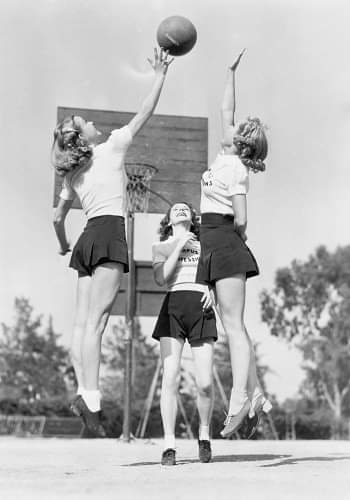 Glencoe Mansion, Museum, and Gallery has been offering weekly history lessons with “Victorian Wednesday” posts on social media, educating the public on everything from traditions and customs to women’s sports in the 1800s.
Glencoe Mansion, Museum, and Gallery has been offering weekly history lessons with “Victorian Wednesday” posts on social media, educating the public on everything from traditions and customs to women’s sports in the 1800s.
One of the most recent posts delved into the evolution of women’s sportswear.
“This week we’ll look at basketball and soccer uniforms,” the post reads. “As we discussed last week, during the Victorian Era modesty was a key component of society. As the 19th Century progressed, however, women became more involved with many sports, creating a unique cross of these two aspects of culture.
“Similar to tennis, basketball was originally played in long dresses with long sleeves,” the post reads. “As time went on, the long sleeves were dropped and the dresses became shorter. By the 1930s, women were still wearing dresses, but they were knee-length with a short sleeve top. By the 1950s the earliest forms of modern uniforms were being adopted with short athletic shorts and short sleeve shirts. In the 1980s, they began to look more familiar with sleeveless jerseys and athletic shorts.
The post goes on to say, “Soccer uniforms went through similar changes. In the 1890s women wore skirts with long-sleeve blouses. By the 1910s, the skirts had shortened and high boots were worn. Shorts were common by the 1930s, though they were not necessarily the athletic shorts we think of today. From the 1950s to 1970s, athletic shorts were developed, and T-shirts were often worn instead of jerseys.
“Women’s soccer uniforms have changed drastically over time. What is interesting is to see how this evolution has corresponded with the suffragette and women’s rights movements. During the Victorian Era, women’s suffrage and legal rights issues came to the forefront of American and British social causes.
“As the movement progressed and women became more independent, we can see that they shorten the dresses of their uniforms and make them more comfortable. Then, with the women’s rights movements in the U.S. in the 1960s and 70s, we see the development of athletic shorts and more athletic shirts. Very rarely are social movements disconnected from cultural evolutions, and we can clearly see this with these athletic uniforms, and how they influence modern sports uniforms.”
To learn more about Victorian life, “Like” Glencoe on Facebook or follow Glencoe on Instagram or visit the museum Tuesday through Saturday from 10 a.m. until 4 p.m. and Sunday from 1 to 4 p.m.


